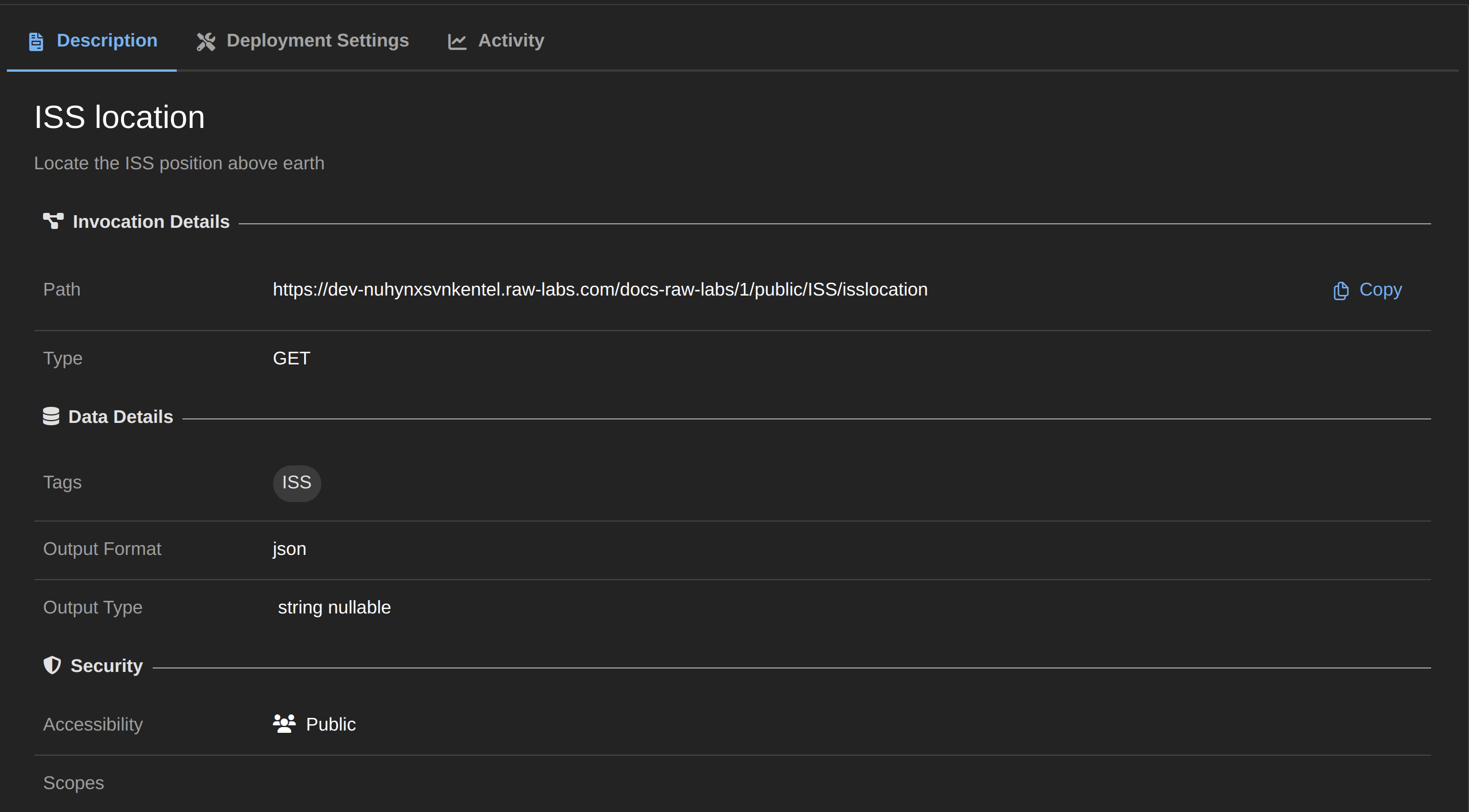Endpoint Description
All business-related information about a selected endpoint is shown in the Endpoint Description panel, as the following image shows:

This information is retrieved from the yaml file of the endpoint.
All fields are analyzed below.
Title and description
The title and the description of the endpoint. These attributes are defined for informative purposes about the type and general functionality of this endpoint. Endpoint creators are free to specify arbitrary infomation within these attributes.

Invocation Details
The invocation details include the following attributes:
- Path, which is the URL of this endpoint
- Type of invocation endpoint, which is either
GETorPOST

An endpoint may or may not receive input arguments. This is automatically deduced by RAW upon processing of the underlying SNAPI code. Here is an example of an parameterized endpoint:

The invocation details provide the invocation URL and the type of invocation endpoint.
Data Details
Data details relate to the output payload of the selected endpoint. Two attributes are specified:
- Output Format: the format of the data returned by the endpoint;
- Output Type: the type of the data returned by the endpoint.

Security
The endpoints can be Public or Private. Public endpoints are openly accessible by any user without prior authentication/authorization. Private endpoints are restricted to be accessbile by users with specific scopes. A scope is a list of tags (plain strings)
Here is an example of a public endpoint:

Here is an example of a private endpoint with a specific scope, called iss:
In order for endpoint consumers (requestors) to invoke this endpoint, the prerequisite is to obtain an Auth0 access token configured with the respective permission (iss), like this one:
{
...
"iat": 1649235181,
"exp": 1649321581,
"azp": "xxx",
"scope": "openid profile email",
"permissions": ["iss"]
}